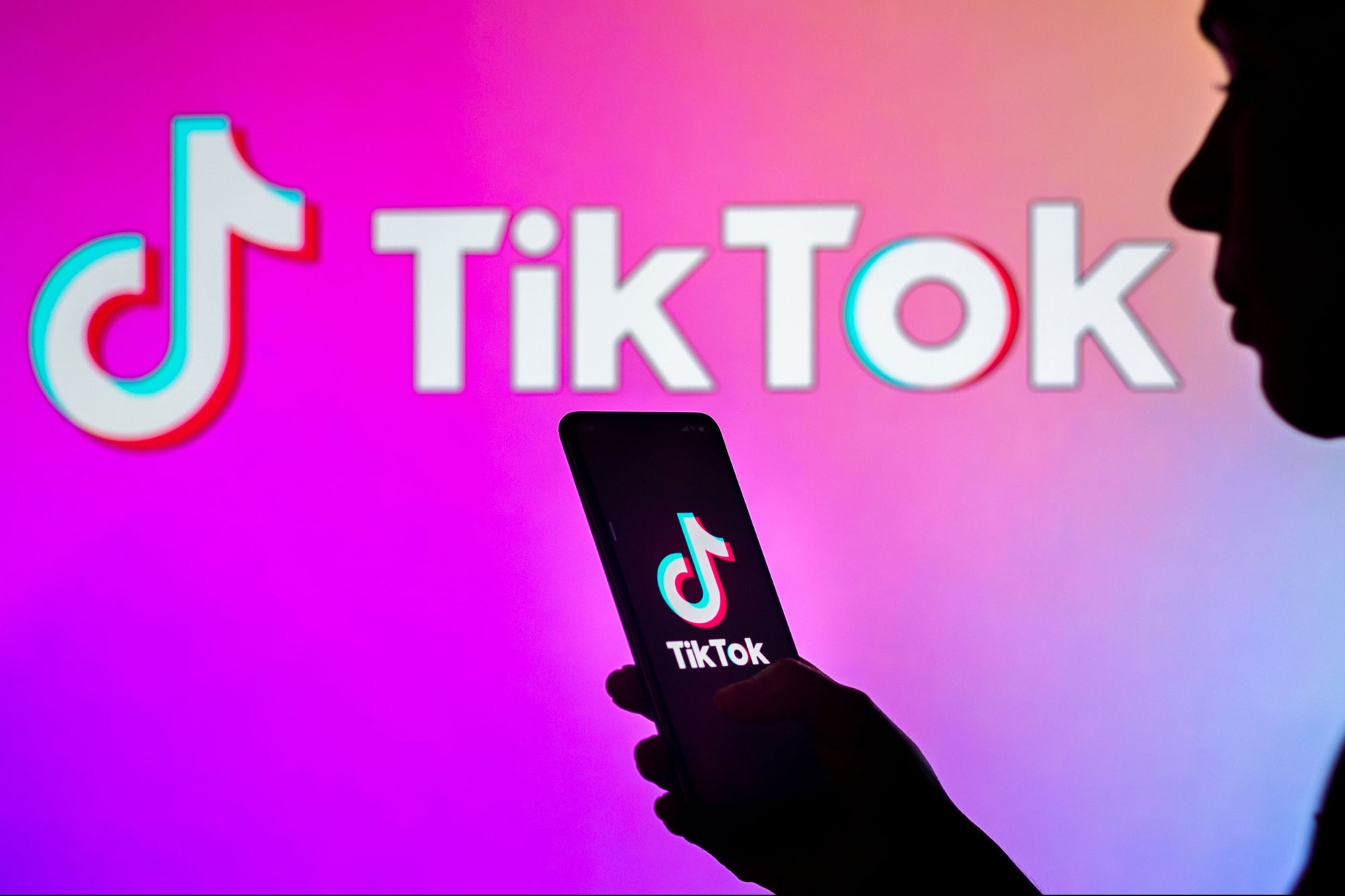AFFILIATE MARKETING
3 TikTok Trends Brands Must Pay Attention To

Opinions expressed by Entrepreneur contributors are their own.
While there are mixed opinions about TikTok, there is no denying that it has earned a place among the top social media channels. Trends on TikTok shift quickly, but agile content creators can make money from their profiles.
Not only was TikTok the most downloaded app in 2022, but also kids spent 62% more time watching TikTok videos than they did YouTube. In addition, it’s noteworthy that Gen Z is the app’s largest demographic, with at least 45 million users in that age range accessing TikTok at least once per month.
At its current growth rate, TikTok has already surpassed Instagram in popularity and will also outstrip Snapchat. This means it’s essential for brands, content creators and marketers to stay on top of TikTok trends to monetize the roughly 95 minutes a day that the average TikTok user spends watching videos.
Here are a few trends to pay attention to:
Related: Looking for New Ecommerce Customers? TikTok Might Be the Best Place to Start.
1. The platform is becoming a sales hub for both brands and influencers
Research from ConvertSocial has found that sales through TikTok’s platform have increased by nearly 400%. One part of this massive surge in sales is because influencers are taking full advantage of advertising and sales opportunities, mainly where affiliate marketing and paid partnerships are concerned.
Additionally, small businesses have also jumped on TikTok as a way to actively establish sales chains that are targeted to younger audiences. These small businesses are creating strong presences, developing their brand identity based on what appeals to these younger users and leveraging that to expand their customer base.
One of the most important factors surrounding this impressive sales growth is that its primary user base has now aged into a bracket where it has considerable spending power. The 10-19 range makes up 32.5% of TikTok’s users, while those aged 20-39 comprise just under 46% of active users. This translates to more purchasing power and a greater interest in products and services with a higher ticket value.
2. Over half of TikTok’s users are women with substantial purchasing power
In a Statista survey as of January 2023, roughly 54% of the global TikTok user base identifies as female. With over a billion users and 670 million downloads in 2022, this is a huge market that most brands are leaving largely untapped.
Believe it or not, only about 18% of marketers fully utilize TikTok as an advertising channel. However, there is an impressive pool of talented social media influencers on the platform who are willing to collaborate with brands to launch successful marketing campaigns, so marketers need to start taking TikTok more seriously to generate revenue.
When you add that women either control or influence at least 85% of consumer spending and account for about $10 trillion of U.S. financial assets, brands should pay attention to what female TikTok consumers are interested in buying.
3. TikTok monetization has yet to hit the saturation point for influencers
Content creators and influencers are well-versed in using platforms like Instagram and YouTube for affiliate marketing and creating a sales funnel. These monetization methods have been done to death via webinars, blog posts, courses and how-to articles.
However, the same is not true for TikTok, partly because it is still a relatively new phenomenon and partly because influencers’ methods to make money are more complex than those of Instagram or YouTube.
For instance, most creators must either heavily promote their affiliate codes or frequently change a link in their profile to keep up with what they’re selling. On other platforms, there are more opportunities to place a clickable link somewhere, which makes the selling process more manageable.
This dovetails with another trend: brand partnerships. Recent ConvertSocial data shows that TikTok bloggers’ income from brand partnerships has grown by 58% in the past year, which proves that the platform’s influencers are figuring out that utilizing the power of a brand alongside traditional affiliate marketing mechanics is a winning strategy for them.
Related: Taco Bell Just Premiered ‘Mexican Pizza: The Musical’ on Tik Tok, Starring Dolly Parton and Doja Cat
Here’s the forecast for TikTok’s marketing prospects
In 2023, one of the best things a brand can do is take TikTok more seriously regarding its audience’s spending power. Most TikTok users can pay for goods and services they see on the platform, so brands can and should leverage this as a lucrative sales channel.
However, it would also be irresponsible not to mention the concerns about certain regulatory risks that some governments, particularly the United States, have raised because TikTok is a Chinese creation owned by a Chinese company called ByteDance. While this has yet to stop over a billion people worldwide from using the app, it is a good idea for companies to capitalize on TikTok’s popularity with eyes wide open and plenty of protections in place.
Overall, TikTok’s popularity is slated to continue its impressive rise, and the revenue-generating opportunities look pretty positive for the coming year. As the platform releases new advertising tools, influencers gain a stronger grasp of marketing mechanics, and more brands begin entering the space; tremendous opportunities await.
AFFILIATE MARKETING
How to Capitalize On This Thriving Talent Pool to Drive Your Company’s Growth

Opinions expressed by Entrepreneur contributors are their own.
As business operations shift, executives and entrepreneurs are increasingly turning to an on-demand workforce that is simultaneously empowered by technology and drawn to purpose-driven projects.
Consider Upwork, whose 2020 Future of Workforce Pulse Report revealed that nearly 80% of hiring managers engaging freelancers feel confident about doing so. These hires provide coveted expertise — on a project-to-project basis — that entrepreneurs need to scale their operations without incurring long-term overhead costs.
This new market paradigm also promotes dynamism, with 79% of businesses agreeing that freelance talent enables greater innovativeness. Perhaps most telling, 84% of hiring managers utilizing it feel more assured about adapting to future disruption, compared to just 69% of those relying solely on full-time staff.
By capitalizing on freelance marketplaces, entrepreneurs can amplify employer branding, augment capabilities and future-proof organizations, even amid turbulence. As nearly 60% of hiring managers plan to increase engagement with freelancers over the next two years, the time is now for executives to realize their inherent potential.
Related: Navigating the Great Reshuffle: Why Your Employer Brand is Key in Recruiting Talent
The job market continues to shift
After a season of massive hiring, we’re back to seeing layoffs and downsizing. Companies are feeling the bloat—from unused office spaces with rising rent to oversized employee structures — and are shifting focus to hiring only the most essential positions. This leaves a critical talent gap needed for complex projects and specialized tasks. Highly skilled and specialized independents can fill this void.
A few key benefits to engaging them:
• Access to niche experts: Platforms like Toptal and Guru provide access to elite professionals from leading Fortune 500 companies and innovative startups. Whether the need is for a machine learning specialist, growth strategist or financial modeler, entrepreneurs can now curate on-demand teams that boast specialized skillsets, enabling them to focus investment on projects with the highest strategic value.
• Enhanced agility: Leading corporations increasingly “rent” skills by tapping freelance experts for initiatives involving new technologies or while entering unfamiliar markets. With niche contributors available to plug knowledge gaps, owners can explore ideas that once seemed unrealistic due to internal constraints—unlocking inventiveness and first-mover advantage.
• Stronger employment brand: Blending full-time employees with project-based freelancers signals a commitment to modernization and work-life balance. Offering both engaging work and flexibility will help draw exceptional candidates and help you compete with corporate giants for top-tier talent.
Related: Can Retirees Thrive in the Gig Economy? Navigating a Changed Workforce
Tips for capitalizing on gig talent
Having explored the forces reshaping work, executives may wonder how to effectively leverage freelance platforms. After all, how can you know you’re getting your money’s worth if a hire isn’t physically present full-time?
• Define projects clearly: Contract hires thrive when expectations and deadlines are established upfront. So, clearly, detail needs around deliverables, success metrics, required skills and projected time investments. Staying ahead when it comes to communication and expectations will help avoid headaches, including delays.
• Build loyalty with talent: The best independent professionals have options regarding the projects they accept. Study their profiles to discern passions and incentives. Offer interesting work, flexibility and strong communication to motivate interest and improve results.
• Manage collaboration: Provide steady context, feedback and guidance at each project stage, but also foster autonomy, even while directing efforts toward strategic goals. A dynamic balance of these qualities drives optimal outcomes.
• Continue expanding your talent pool: Add proven freelancers to an internal database for repeat engagements, and notify talent about new initiatives for which their expertise would provide an edge. Uncovering additional ways, freelancers can enhance the business deepens the relationship.
Related: Fill Your Talent Gap by Sourcing Candidates From the Veteran Community
Top platforms for connecting with talent
Now comes the hard part: finding contractors who bring fractional expertise sets. There are a growing number of platforms, of course, but I’ve found that the following stand out as leaders:
Fiverr: Ideal for execs seeking design, digital marketing, writing, video and admin support. Known for affordability and ease of posting jobs. It taps a global talent pool, too.
Upwork: A flexible platform that spans more than 150 skills. Used by everyone from small businesses to global enterprises. Strong at IT, development, design, finance and consulting.
Toptal: Focuses exclusively on the top 3% of talent. Best for expert software developers, designers, project managers and finance experts. All contributors are extensively vetted.
Contra: A growing independent platform that vets and connects both job candidates and hiring companies. Best of all, it doesn’t take a commission from projects.
Related: 3 Strategies to Optimize Your Hiring Process and Find the Best Employees
The numbers speak for themselves: businesses engaging freelance professionals report greater confidence and competitiveness, as well as the ability to withstand turbulence, yet legacy beliefs can still cause hesitancy among those keen to hire. Supported by such specialized collaborators, companies can explore new horizons unencumbered by a one-time narrow view of staffing models.
AFFILIATE MARKETING
Trump Media stock plummets again

Trump Media & Technology Group Corp (TMGT) shares plummeted after the entity filed to the U.S. Securities and Exchange Commission (SEC) to issue 21 million shares.
The parent company of social media platform Truth Social has approached the SEC with a Files S-1 Resale Registration Statement.
Trump shares nosedive after announcement
The shares in the company ended the day on the stock market a further 18% down on initial trading. The SEC filing states:
We are registering the resale by the Selling Securityholders named in this prospectus, or their permitted transferees, an aggregate of 146,108,680 shares of Common Stock, consisting of:
- 1,133,484 Placement Shares;
- Up to 14,316,050 Founder and Anchor Investors Shares;
- 744,020 Conversion Shares;
- 965,125 DWAC Compensation Shares;
- 690,000 TMTG Compensation Shares;
- 6,250,000 Alternative Financing Shares;
- 7,116,251 Private Warrant Shares;
- 143,750 Representative Shares; and
- 114,750,000 President Trump Shares.
This takes the overall fall down to nearly 60% of the launch price for the former President’s company stock. We reported earlier this month that the initial stock had fallen 20% in the first week of trading on the stock exchange.
Digital World Acquisition Corp merged with Trump Media in late February to a large fanfare. The highest mark for the much-talked-about stock came in at $66.22, so the dip to $26.61 is a catastrophic fall ahead of a potential further share issue.
The $52.77 plummet will be a costly one for the company, but as we reported last week, executives are still taking home sizeable compensation in this turbulent opening.
Leading figures at TMGT have been given promissory notes to the tune of $6.25 million.
This is broken down into $1.15 million for Chief Executive Officer Devin Nunes, $4.9 million for Chief Financial Officer Phillip Juhan, and $200,000 for Chief Operating Officer Andrew Northwall.
It will be an interesting read ahead to see if the SEC agrees on the share issue and one that will certainly impact the future of TMGT.
Image: Ideogram.
The post Trump Media stock plummets again appeared first on Due.
AFFILIATE MARKETING
Save an Extra 20% on the Ultimate Microsoft Bundle Featuring Windows 11 Pro, Office, and More

Disclosure: Our goal is to feature products and services that we think you’ll find interesting and useful. If you purchase them, Entrepreneur may get a small share of the revenue from the sale from our commerce partners.
Microsoft’s creations have impacted more than 1 billion users worldwide, helping successful innovators across industries. You can currently pick up a comprehensive collection of popular products that are primed to boost your productivity for a surprisingly low price.
For a limited time, purchase the Ultimate 2019 Microsoft Bundle, complete with Office, Project, Visio and Windows 11 Pro, at only $79.99 (reg. $927) by using coupon code ENJOY20. Pick up this full package for only a fraction of the standard cost through April 16 at 11:59 p.m. Pacific.
Offering an AI assistant, touchscreen options and personalized settings, Microsoft Windows 11 Pro packs new potential into your operating system. Enjoy higher speeds and greater security with an OS that delivers access to DirectX 12 Ultimate and Microsoft Teams.
Meanwhile, get right to work with Microsoft Office Professional Plus 2019, equipped with these programs:
- Access for keeping track of databases.
- Excel for diving into data.
- OneNote for enhanced note-taking.
- Outlook for maximized email management.
- PowerPoint for visual presentations.
- Publisher for graphic design needs.
- Word for creating text documents.
Microsoft Project provides everything you need for a large professional undertaking, with tools featuring budget management, schedule development, task assignments and workload analysis. Gain a greater feel on what’s working well and what’s not by examining automated progress reports. Plus, it’s prepared to sync with Microsoft Office.
Last but not least, Vizio is excellent for creating visual diagrams, floor plans, flow charts and more. Access 250,000 shapes and an array of templates that can be easily customized with data from compatible programs such as Microsoft Excel.
This bundle carries a store rating of 4.5 out of five based on verified buyer reviews, featuring March 2024 feedback that reads, “The installation was easy and it worked right away as expected. I will get another one in the future.”
Improve your production capabilities while accomplishing more professionally and personally by purchasing the Ultimate 2019 Microsoft Bundle, loaded with Office, Project, Visio and Windows 11 Pro, for only $79.99 (reg. $927) by using coupon code ENJOY20 through April 16 at 11:59 p.m. Pacific.
StackSocial prices subject to change.
-

 PPC7 days ago
PPC7 days agoCompetitor Monitoring: 7 ways to keep watch on the competition
-

 WORDPRESS6 days ago
WORDPRESS6 days agoTurkish startup ikas attracts $20M for its e-commerce platform designed for small businesses
-

 PPC6 days ago
PPC6 days ago31 Ready-to-Go Mother’s Day Messages for Social Media, Email, & More
-

 PPC6 days ago
PPC6 days agoA History of Google AdWords and Google Ads: Revolutionizing Digital Advertising & Marketing Since 2000
-

 WORDPRESS7 days ago
WORDPRESS7 days agoThrive Architect vs Divi vs Elementor
-

 SEARCHENGINES7 days ago
SEARCHENGINES7 days agoMore Google March 2024 Core Update Ranking Volatility
-

 MARKETING5 days ago
MARKETING5 days agoRoundel Media Studio: What to Expect From Target’s New Self-Service Platform
-

 SEARCHENGINES6 days ago
SEARCHENGINES6 days agoGoogle Search Results Can Be Harmful & Dangerous In Some Cases














